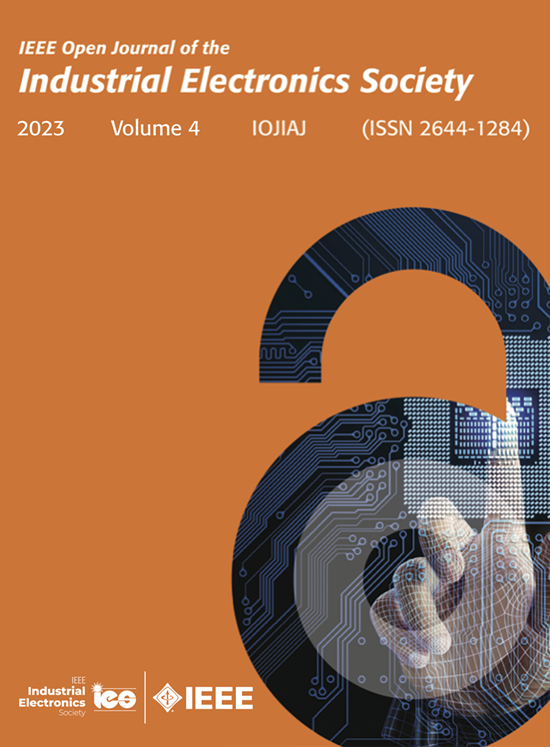八自由度海洋驱动四足机器人的otto设计与控制
IF 4.3
Q1 ENGINEERING, ELECTRICAL & ELECTRONIC
IEEE Open Journal of the Industrial Electronics Society
Pub Date : 2025-03-05
DOI:10.1109/OJIES.2025.3567112
引用次数: 0
摘要
本文介绍了采用串联弹性致动器的轻型8自由度(8-DoF)四足机器人Otto的机械设计,以及使用强化学习(RL)在仿真中学习运动控制策略的训练框架。奥托的设计不同于典型的12自由度四足动物,它缺乏髋关节内收外展自由度。这降低了机器人的成本和重量,并增加了涉及基础旋转和角扭转跟随的任务的复杂性。关节处的弹性元件提高了顺应性、能效、安全性和稳定性,增加了鲁棒性,并减少了对机器人硬件部件的损坏。我们的运动控制方法利用强化学习来优化仿真中的策略,允许在机械约束下稳定有效的运动,即8自由度四足机器人。通过广泛的模拟训练,利用高度并行的图形处理单元(GPU)加速机器人模拟器,我们确保该策略非常适合在真实场景中部署,其中精确的运动控制对性能至关重要。然后将训练好的策略转移到物理机器人平台。我们展示了其在各种任务和具有不同有效载荷和地形的现实生活场景中的有效性,并将其与最先进的基于模型的方法进行了比较。结果表明,配备基于rl的运动控制的Otto实现了鲁棒性,补偿了现实差距并管理了Otto中可用的减少的自由度。本文章由计算机程序翻译,如有差异,请以英文原文为准。
Otto—Design and Control of an 8-DoF SEA-Driven Quadrupedal Robot
This article presents the mechanical design of Otto, a lightweight 8-degrees-of-freedom (8-DoF) quadrupedal robot employing series elastic actuators, and a training framework for learning locomotion control policies in simulation using reinforcement learning (RL). Otto's design differs from typical 12-DoF quadrupeds by lacking hip adduction–abduction DoF. This reduces the robot's cost and weight and increases complexity for tasks involving base rotation and angular twist following. The elastic elements at the joints improve compliance, energy efficiency, safety, and stability, increase robustness, and reduce damage to robot hardware components. Our locomotion control approach leverages RL to optimize policies in simulation, allowing stable and efficient movement despite mechanical constraints, i.e., an 8-DoF quadrupedal robot. Through extensive simulation training, leveraging highly parallel Graphics Processing Unit (GPU)-accelerated robotic simulators, we ensure the policy is well-suited for deployment in real-world scenarios, where accurate motion control is critical for performance. The trained policy is then transferred to the physical robot platform. We demonstrate its effectiveness in various tasks and real-life scenarios with varying payloads and terrains, and compare it with a state-of-the-art model-based method. The results show that Otto, equipped with our RL-based locomotion control, achieves robust performance, compensating for the reality gap and managing the reduced DoF available in Otto.
求助全文
通过发布文献求助,成功后即可免费获取论文全文。
去求助
来源期刊

IEEE Open Journal of the Industrial Electronics Society
ENGINEERING, ELECTRICAL & ELECTRONIC-
CiteScore
10.80
自引率
2.40%
发文量
33
审稿时长
12 weeks
期刊介绍:
The IEEE Open Journal of the Industrial Electronics Society is dedicated to advancing information-intensive, knowledge-based automation, and digitalization, aiming to enhance various industrial and infrastructural ecosystems including energy, mobility, health, and home/building infrastructure. Encompassing a range of techniques leveraging data and information acquisition, analysis, manipulation, and distribution, the journal strives to achieve greater flexibility, efficiency, effectiveness, reliability, and security within digitalized and networked environments.
Our scope provides a platform for discourse and dissemination of the latest developments in numerous research and innovation areas. These include electrical components and systems, smart grids, industrial cyber-physical systems, motion control, robotics and mechatronics, sensors and actuators, factory and building communication and automation, industrial digitalization, flexible and reconfigurable manufacturing, assistant systems, industrial applications of artificial intelligence and data science, as well as the implementation of machine learning, artificial neural networks, and fuzzy logic. Additionally, we explore human factors in digitalized and networked ecosystems. Join us in exploring and shaping the future of industrial electronics and digitalization.
 求助内容:
求助内容: 应助结果提醒方式:
应助结果提醒方式:


